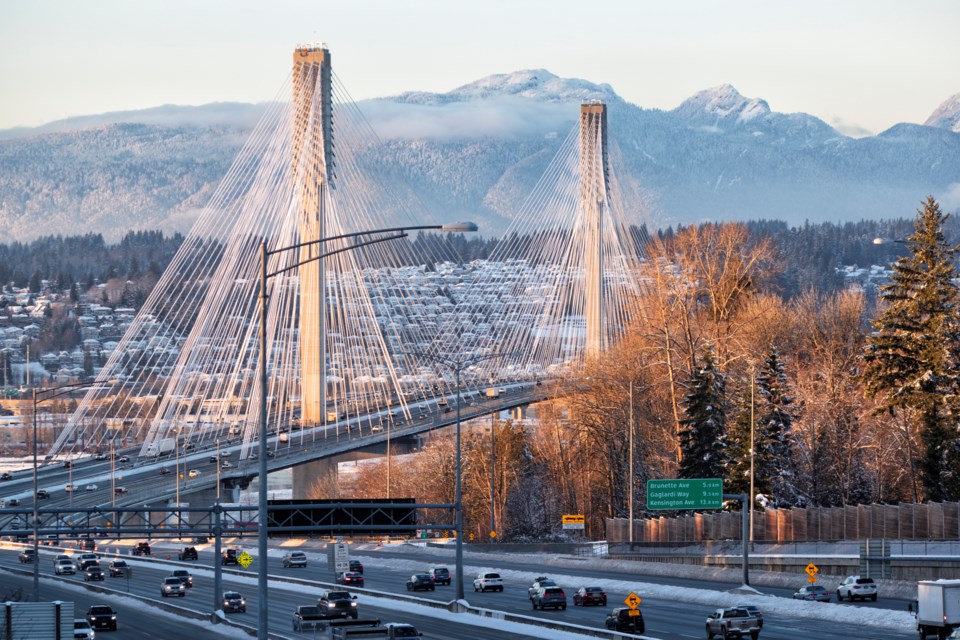Metro Vancouver’s board of directors passed the 2050 regional growth strategy Friday, following delays caused by its initial rejection by two of the region’s 24 jurisdictions.
Surrey and the Township of Langley are now on board with the strategy that generally dictates land use for much of the Lower Mainland, calling on cities to densify already developed land and maintain rural and agricultural areas while still adding upwards of one million more residents by 2050.
Last year, Surrey city councillors led by then mayor Doug McCallum snubbed the growth strategy, putting it in limbo. McCallum had objected to the regional government imposing limits on developing rural land, particularly in the city’s southeast quadrant, known as Campbell Heights. McCallum sought to build a 245-hectare industrial park and got the backing of the majority on the previous board to pull the land from the strategy’s urban containment boundary.
Fast forward to now, with McCallum unelected at last October’s election, Surrey city council, led by Mayor Brenda Locke, reversed its position by endorsing the strategy last December.
In supporting the plan, Locke told Glacier Media, “I think that’s a statement that we do support the region and we’re all in this together.”
“One road cannot divide us directly, we have to work together but, still, you have to keep your autonomy; there’s no doubt about that. But I think, generally, you have to do a good job of being good neighours to each other; that’s how people live in Metro Vancouver,” said Locke.
Asked if she will reverse the Campbell Heights proposal considering she opposed it as a councillor, Locke said: “We will be very cognizant of the impact of Campbell Heights. I am very concerned about that. There are some pieces of Campbell Heights that may be OK to see a different plan, but there are three aquifers to consider.”
Campbell Heights pitted directors wanting to maintain regional environmental standards versus those desiring more lands for employment. Opponents said it went against the growth strategy as it placed a major work centre outside the reach of bus services.
The Township of Langley also opposed the plan initially due to its concerns around not allowing certain densities in the Salmon River Uplands area. But the two parties have since reached an agreement.
“The purpose of this strategy is to promote the creation of communities that are socially, economically, and environmentally healthy, and make efficient use of public facilities and services, land, and other resources,” explained Eric Woodward, chair of Metro Vancouver’s regional planning committee, in a statement on Friday following the approval.
Metro Vancouver claims the strategy sets out five overarching key goals: create a compact urban area; support a sustainable economy; protect the environment and respond to climate change and natural hazards; provide diverse and affordable housing choices; and support sustainable transportation choices.
The strategy will focus 98 per cent of the region’s residential growth to areas within the urban containment boundary (essentially the areas already developed and outside the Agricultural Land Reserve). It will further direct 40 per cent of residential growth and 50 per cent of the region’s employment growth to so-called urban centres along major transit corridors.
The densification aims to reduce dependency on single-occupant car commutes.
As such, the strategy involves climate change mitigation policies, with the aim of achieving a “carbon neutral” region by the year 2050.
The strategy calls for protecting 50 per cent of the land base for nature, up from 40 per cent in the 2040 strategy, and expanding the urban tree canopy to 40 per cent.
Metro Vancouver municipalities will also ensure that “at least 15 per cent of new and redeveloped housing units in urban centres and along frequent transit corridors are affordable rental homes.”
“Our region is growing by about 35,000 people every year and we must plan to accommodate that growth in a way that creates connected communities and protects important lands, like farmland and industrial land, as well as environmentally-sensitive areas in our region,” stated Heather McNell, Metro Vancouver's deputy chief administrative officer of policy and planning.
“With meaningful input over several years from First Nations, other orders of government, stakeholders, and residents, Metro 2050 is a true reflection of our collective vision for our future," said McNell.
Municipalities are now tasked to update their official community plans to reflect the strategy’s goals.
The strategy is posted on Metro Vancouver's website.




